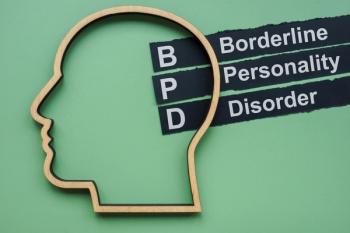
Borderline Personality Disorder Without DBT? Absolutely.
Discover effective strategies for treating borderline personality disorder without intensive therapy, focusing on empowerment, structure, and human connection.
Despite what you might hear in academic circles or the latest psychotherapy workshop, treating borderline personality disorder (BPD) does not require a PhD in dialectical behavior therapy—or a magic pill from the pharmacy. In fact, some of the most meaningful and lasting work I have done in psychiatry has been with patients carrying this diagnosis—without access to “gold standard” therapies or high end treatment programs.
If you work in community mental health or serve underserved populations, you know the deal: there are no weekly dialectical behavior therapy (DBT) groups, no luxury residential programs, no endless time to fine tune a schema. So, the question becomes: Can you make a difference for people with BPD using basic clinical tools, honesty, and a human connection?
Yes. Unequivocally, yes. And here is how.
1. Name the Diagnosis—Without Shame or Spin.
One of the biggest mistakes we make is dancing around the diagnosis. Do not gaslight the patient. Do not bury the label in jargon. Tell them the truth, in plain language: BPD is a disorder of emotional regulation. Emotions hit hard, fast, and linger longer than in most people. It is not their fault—but it is their responsibility to manage. That is the beginning of empowerment.
I always add that most patients improve over time—often by their 30s or 40s—even without intensive therapy. That gives people hope. It also sets realistic expectations: medication is not a cure. It is a tool, and only one of many.
2. Stop Obsessing Over Symptoms—Start Building a Life.
I often tell my patients: “You need to stop focusing on your relationship, your ex, and your internal status report. It is time to get a life.” And I mean it. Help them imagine a future—jobs, education, meaningful pursuits. The structure and purpose that come with real world goals are more stabilizing than any mood stabilizer.
Too many patients with BPD are living without routine, without purpose, without direction. Give them something worth waking up for. A job teaches emotional regulation far better than any workbook.
3. Daily Mood Tracking: Simple, Old-School, Effective.
Whether it is an app or a spiral notebook, have them track their mood daily. The point is not just data—it is insight. Over time, they learn the patterns. What triggers the rage? The despair? The impulse to self harm? Awareness is the first step in behavioral change—and it costs nothing.
4. Don’t Panic During a Crisis—Model Calm and Containment.
Crisis is inevitable. That is part of the deal with BPD. But how you respond matters more than what you do. Do not overreact. Do not reach for involuntary admission the minute someone utters “suicidal.” Show concern, but keep your cool.
Respond like the “good enough mother” Winnicott described—not detached, not smothering, just steady. If you reinforce crisis behaviors with urgent action every time, guess what they will keep doing?
5. Teach Distress Tolerance—Not Emotional Escape.
One of the most powerful things we can do is teach patients to sit with their feelings. No one dies from distress. It passes. Every time. But if the response to pain is always escape—hospital, meds, substances—then they never build the muscle for tolerating reality.
I say things like: “You’re having a BPD moment. It feels overwhelming, but it won’t last. You’ve survived worse.” Remind them that every emotional storm eventually passes. Nothing lasts forever—not even borderline rage.
6. Stop the Polypharmacy Madness.
Let’s get real: there is no “borderline cocktail.” That is a myth passed down by well meaning but misguided prescribers. The road to polypharmacy hell is paved with attempts to medicate every emotional nuance.
Sure, targeted meds can help. A low-dose mood stabilizer, a sleep aid, maybe something for co-occurring depression or posttraumatic stress disorder—but less is more. Treat real, impairing symptoms. Ignore the rest.
7. Never Cosign Catastrophizing or Learned Helplessness.
BPD narratives often involve helplessness and end of the world thinking. Validate the feeling, but never the distortion. If a patient tells me “nothing will ever get better,” I respond: “That’s your fear talking, not reality.”
We have to be the mirror that reflects their strength—not just their suffering.
8. Shift the Focus Back to the Patient’s Role in Recovery.
Therapy will not fix someone who does not want to grow. Medication will not change a person who refuses to act. At the end of the day, recovery is their job, and I make that clear. Not to shame them—but to liberate them. The truth is, no one can rescue them—not even the most idealized therapist. They have to pick up the pen and write their own story. I am here to guide, not to save.
I will leave you with this:Treating BPD does not require a 4-week intensive or a consulting team of DBT experts. It requires consistency, clarity, boundaries, and belief in the patient’s ability to change. In community settings where fancy resources do not exist, we make do with what we have—and sometimes, that is more than enough. Because what actually heals individuals with BPD is not magic. It is honesty, structure, and a little hope.
Dr Rossi is an inpatient and consultation liaison psychiatrist who also performs electroconvulsive therapy services at AtlantiCare Regional Medical Center in Pomona, New Jersey. He currently serves on the board of the New Jersey Psychiatric Association, where he has worked on advocacy projects, including enhancing access to collaborative care in the state.
Newsletter
Receive trusted psychiatric news, expert analysis, and clinical insights — subscribe today to support your practice and your patients.













